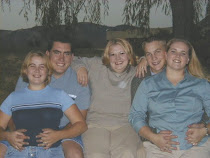hot tip EGGS FOR EASTER!
{portions taken from foodies kitchen}
How to hard cook eggs without cracking them~Cold water method or hot? Room temperature eggs or cold eggs? Cold water plunge or no cold water plunge? Here in the foodies kitchen, we tested every possible permutation-- this is how to hard cook an egg:
~Use fresh eggs, preferably organic or grain fed, as they peel more easily once cooked. They also have better texture
and flavor.
~Bring eggs to room temperature before cooking. This helps prevent cracking due to the sudden shock of temperature change and ensures a properly cooked egg. If you do use eggs right out of the refrigerator, add a minute or two to the cooking time.
~Simmer eggs. A roiling boil is too violent. Call them "hard cooked" instead of "hard boiled" and you'll remember
this hint.
~Don't crowd the pan. The eggs will knock each other and crack.
~In a saucepan, bring enough water to cover the eggs to a boil. With a slotted spoon, lower the eggs into the water. Quickly, bring the water back to a boil. Lower the temperature to medium heat and simmer exactly 10 minutes. Remove the eggs with a slotted spoon and plunge into a bowl of cold tap water. The cold water will stop further cooking and create a gap between shell and egg for easier peeling. You may put the eggs right into a color bath now if you wish.
How to color eggs without the silly kit
In a bowl (not metal), pour in enough water and white distilled vinegar to cover the eggs. For pastel colors use one cup of water to 1 tablespoon of vinegar. (Intensify the color by reducing the amount of water used or leaving the eggs in the dye for longer periods of time.) Using basic food coloring, {betty crocker has gel food coloring in many different colors on the baking isle} mix your own shade in the water and vinegar. Be sure the food coloring is completely blended so there are no "stains" on the eggs. Carefully submerge hard cooked eggs in the color bath, rotating frequently, until of desired intensity.
Egg coloring tricks
~For an easy tie dyed look, wrap the egg with rubber bands before coloring.
~Take a candle or other piece of wax and draw whatever you fancy on the egg-- the dye will not be absorbed by the wax.
~Mix some offbeat colors. Or use a very strong solution of dye and leave the eggs in it for a long while-- a deeply colored egg is gorgeous.
~Fashion a ring to hold the egg at the end of a handle out of some seizing wire (or other stiff wire) and lower the egg very, very slowly into the bath to create a striated effect.
~Let kids decorate the eggs. Set some eggs aside that will not be eaten, collect odds and ends from house and garden, provide glue sticks, and let the little ones put Fabergé to shame.
How to peel a hard cooked egg
Cold eggs peel more easily than room temperature eggs. Gently tap the egg shell on the counter along the egg's "equator." Place the egg between hands and roll back and forth as if you were making a hot dog out of clay. You should feel the shell and membrane loosening from the egg white. Peel off the shell. If the shell is still coming off in irritating bits, peel under running water (this is the last resort)






Tuesday, March 31, 2009 12:29:00 PM
THANK YOU! I always end up with cracked eggs. This year I am going to do it without the cracks, I will let you know.
Tuesday, March 31, 2009 1:33:00 PM
Oh, I love this !
I haven't bought one of those silly kits in years...thanks so much for the great tips !
Tuesday, March 31, 2009 4:45:00 PM
Thanks for that!
Tuesday, March 31, 2009 9:11:00 PM
Great tips!